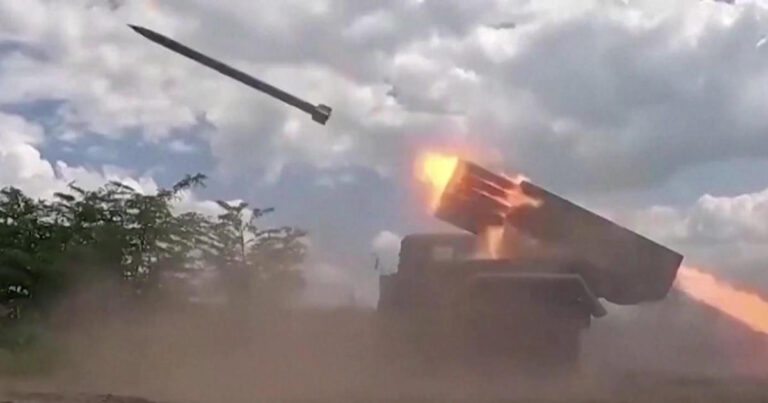The Russian army has had a makeover in Ukraine: soldiers on motorcycles speeding through no man’s land, relying on their speed to evade Ukrainian fire… but not always able to outrun the swarms of drones that hover above the battlefield and can pick off fighters one by one.
47th Mechanized Brigade/CBS News
George Barros of the Institute for the Study of War says it is one of several new tactics Russia has used to seize 430 square miles of territory in the past nine months.
“Right now, the Russians have the upper hand,” Barros said. “They can choose where, when, the pace of the battle and the intensity with which they want to conduct offensive operations anywhere along that entire 600-mile front line.[…]This puts them within striking distance of some very important land lines of communication. [and] “supply corridors that connect some of the really important big cities that are the backbone of the defense of eastern Ukraine.”
But the price to pay for these advances is very high: according to Barros, the Russians are losing between 25,000 and 30,000 soldiers per month. By some estimates, Russia has lost half a million dead or wounded since the invasion began in February 2022.
Yet Putin has been able to replace these losses and continue his ruthless, long-term war strategy: endless assaults to weaken Ukraine’s resilience, coupled with threats of nuclear war against nations that support Ukraine.
Barros said: “Putin understands that what will make or break this war is the decision of the allied states that support Ukraine to engage in it or not.”
The United States backed down when political reasons led to a five-month suspension of arms deliveries to Ukraine.
The delay came just as the Russian air force was launching a devastating new weapon. Barros said: “The Russians discovered they could put these cheap glide kits on top of the glide bombs and convert their large stockpile of Soviet-era gravity bombs into a precision weapon.”
The bombs are developed in flight and, guided by a GPS signal, glide toward targets 50 to 60 kilometers away, while Russian pilots stay out of range of Ukrainian air defenses. “They can use their air power and their 500-kilogram bombs to pound and destroy Ukrainian trenches, bunkers, strongpoints and fortifications,” Barros explained.
Thousands of bombs and millions of artillery shells have transformed the battlefield into a lunar landscape of craters. One of them became a death trap for a Russian tank when a tiny Ukrainian drone attacked it.
Russia has tried to protect its tanks with additional layers of armor, but for every measure there is a countermeasure – and American weapons are once again flowing into Ukraine.
Barros said: “As long as the Russians fail to convince the international coalition to continue supporting Ukraine, they have no chance of winning in Ukraine.”
As in all wars, it is a question of will that counts. “Political will is the decisive factor in this war,” Barros said. “It is not what happens on the battlefield: territory can be lost, given up and taken back. But if we decide to abandon the Ukrainians, they will lose. Frankly, the center of gravity of this war is not the terrain in Ukraine, but what happens here in Washington, as it was in World War II, as it is today.”
For more information:
Story written by Mary Walsh. Editor: Joseph Frandino.
See also:


